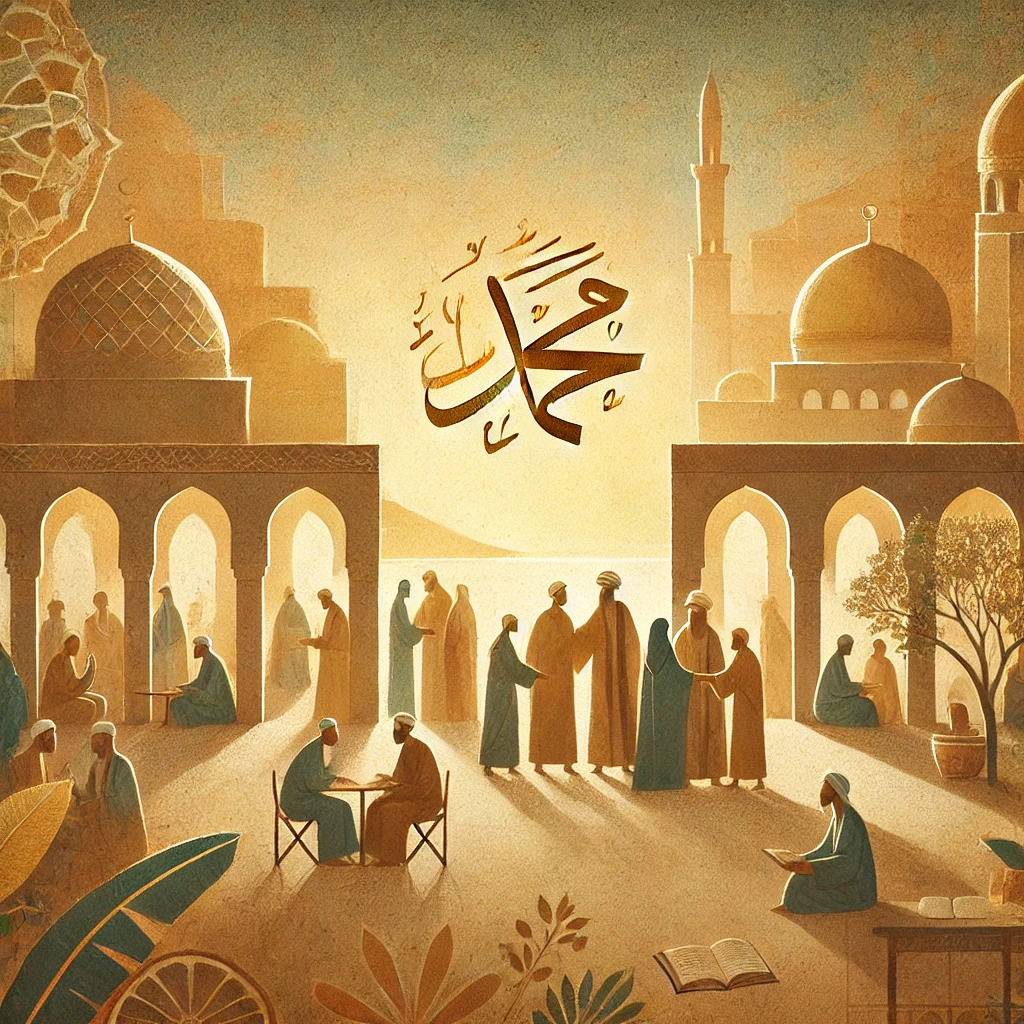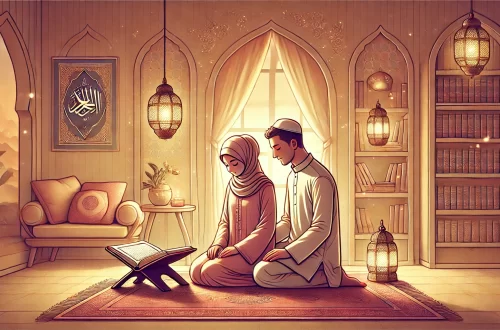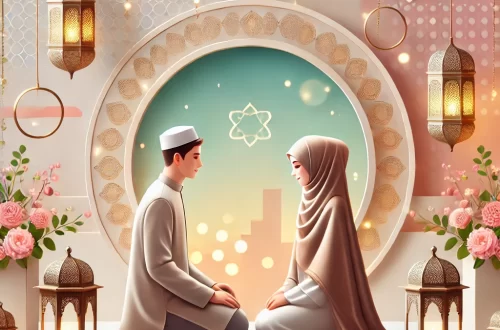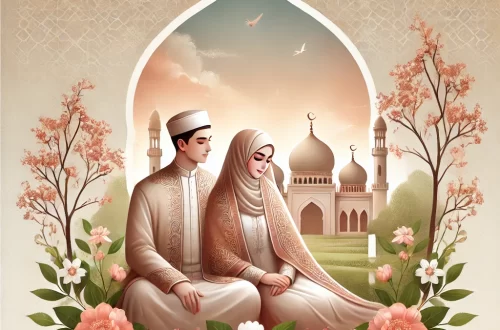Do you know Cultural barriers have long been a defining challenge in human relationships, whether in personal connections or broader social structures. In our increasingly globalized world, understanding and overcoming cultural differences is more important than ever. But where do we find guidance on bridging these gaps? A profound source of wisdom lies in the life of the Prophet Muhammad ﷺ, particularly his marriages.
The Prophet’s ﷺ marriages offer rich insights into how cultural barriers—whether related to class, ethnicity, gender, or tribal identity—can be overcome with understanding, empathy, and wisdom. Let’s explore these remarkable lessons and how they can be applied today.
Join India’s leading Muslim Matrimonial platform, salaamsoulmate.com, and connect with your perfect match today!
The Concept of Cultural Barriers in Relationships
Before diving into the Prophet’s ﷺ marriages, it’s essential to understand what cultural barriers are and how they manifest in relationships. Cultural barriers often arise from differences in ethnicity, social status, traditions, or religious beliefs. These barriers can create misunderstandings, reinforce stereotypes, and make it challenging for people to connect with each other.
The Prophet’s ﷺ Marriages: A Model for Breaking Barriers
The Prophet Muhammad ﷺ’s marriages were not only a reflection of his personal life but also a testament to his mission of uniting people across various divides. He married women from different backgrounds, ethnicities, and social statuses, all of whom contributed to the Islamic community in unique ways. His marriages teach us that love, respect, and mutual understanding can overcome even the most entrenched cultural barriers.
Marriage to Khadijah: Overcoming Socioeconomic Differences
The Prophet’s ﷺ first marriage was to Khadijah bint Khuwaylid, a wealthy, independent, and respected businesswoman. Despite their differing social statuses—Khadijah was wealthy, and Muhammad ﷺ was a young, poor merchant—their marriage defied the norms of the time. Khadijah’s wealth was never a source of division, nor did it affect their deep emotional and spiritual connection.
The key lesson here is that socioeconomic differences should never be a barrier to love or partnership. Mutual respect and shared values are what truly define a strong marriage.
Marriage to Sawda: A Lesson in Embracing Diversity
Sawda bint Zam’a was the second wife of the Prophet ﷺ. Her background was quite different from that of Khadijah. Sawda was a woman from a less affluent background and had previously been married. Their marriage teaches us that love transcends all social boundaries. In a society that often emphasizes purity or social status, the Prophet ﷺ’s choice to marry Sawda is a powerful lesson in embracing diversity and looking beyond external factors.
Marriage to Aisha: Youth, Education, and Gender Norms
Aisha bint Abi Bakr, one of the most prominent figures in Islamic history, was married to the Prophet ﷺ at a young age. While their union often draws attention for its age difference, it also highlights the importance of education and gender roles. Aisha played a crucial role in spreading knowledge and had an influential voice in the early Islamic community. The Prophet ﷺ valued her intelligence and insights, which challenges the traditional gender norms of their time.
This marriage encourages us to challenge societal expectations and invest in education for both women and men, irrespective of their age or gender.
Marriage to Hafsa: Political Alliances and Cultural Challenges
Hafsa bint Umar, the daughter of the revered companion Umar ibn al-Khattab, was another important figure in the Prophet’s ﷺ life. Hafsa’s marriage to Muhammad ﷺ wasn’t only a union based on love but also had political significance. She was a widow and had experienced the cultural stigma that came with her status, yet she remained a strong and influential figure.
Marriage to Zaynab bint Khuzayma: Compassion Over Wealth
Zaynab bint Khuzayma, known for her charity and kindness, was married to the Prophet ﷺ after being widowed. Despite her relatively modest social standing, Zaynab’s character and commitment to helping others was what defined her. The Prophet ﷺ’s marriage to her emphasizes the importance of compassion and selflessness over wealth or status.
Marriage to Umm Salama: A Widow’s Strength in Cultural Context
Umm Salama was a widow who had lost her husband in battle. At a time when widows were often marginalized, the Prophet ﷺ showed respect and support for her, and their marriage became a testament to the empowerment of women in early Islam. Umm Salama’s wisdom and strength in facing challenges serve as an example of overcoming the cultural barriers that widows often face.
Marriage to Zaynab bint Jahsh: Breaking Tribal Barriers
Zaynab bint Jahsh was of noble birth and related to the Prophet ﷺ through his aunt. However, her marriage to Muhammad ﷺ broke tribal barriers, as she was originally married to the Prophet’s ﷺ adopted son, Zayd ibn Haritha. This union highlights the idea that loyalty to tribe or clan should never supersede a higher moral or divine calling.
Marriage to Juwayriya and Safiyya: Lessons in Racism and Slavery
Both Juwayriya bint al-Harith and Safiyya bint Huyayy were from tribes that had been enemies of Islam, and both were captured after their tribes were defeated. Yet, the Prophet ﷺ elevated them, breaking the cultural prejudices against race and slavery. Their marriages send a clear message about the inherent worth of every individual, regardless of their background or past.
The Prophet ﷺ’s Marriages and Interfaith Dialogue
Some of the Prophet ﷺ marriages were to women who were not initially Muslim. This provides a powerful example of how respect for other faiths can be integrated into marriage, fostering interfaith dialogue and understanding. The Prophet ﷺ demonstrated that cultural and religious differences should be respected, not feared.
The Prophet ﷺ Marriages: A Blueprint for Modern Relationships
Today, many people face cultural, ethnic, or religious challenges in their relationships. By following the example set by the Prophet ﷺ, we can learn how to break down these barriers and form meaningful connections. Respect, mutual understanding, and empathy are timeless values that can help bridge cultural divides.
Conclusion
The Prophet Muhammad ﷺ’s marriages offer profound insights into how we can break down cultural barriers in relationships. These lessons emphasize the importance of looking beyond superficial differences and valuing each individual for their character, wisdom, and faith. His life remains a guiding light for overcoming cultural divides and building stronger, more inclusive communities.
FAQs
- How did the Prophet ﷺ overcome cultural barriers in his marriages? The Prophet ﷺ overcame cultural barriers by prioritizing mutual respect, shared values, and understanding. He married women from diverse backgrounds and focused on what united them rather than what divided them.
- What lessons can we learn from the Prophet’s ﷺ approach to intercultural relationships? We can learn to embrace diversity, prioritize character over social status, and respect cultural differences while building inclusive relationships based on understanding and empathy.
- How did the Prophet ﷺ view the role of women in marriage? The Prophet ﷺ valued women for their intellect, strength, and character. He encouraged education and mutual respect, allowing women to play vital roles in both personal and public life.
- How can the Prophet’s ﷺ marital life inspire modern-day relationships? The Prophet’s ﷺ marital life teaches us the importance of empathy, respect, and cultural sensitivity in modern relationships, encouraging us to prioritize the values that unite us over the differences that divide us.






